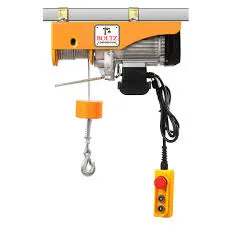


Understanding the Pallet Truck Manual A Guide to Safe and Efficient Operation
Pallet trucks, also known as pallet jacks, are essential tools in various industries, particularly in warehouses and distribution centers. They are designed to lift and transport heavy loads on pallets, making them invaluable for material handling. However, to ensure safety and efficiency during operation, it is crucial for operators to familiarize themselves with the pallet truck manual.
Importance of the Pallet Truck Manual
The pallet truck manual serves as a comprehensive resource for users. It provides critical information regarding operational procedures, maintenance, and safety protocols. Understanding this manual enhances not only the efficiency of using the pallet truck but also ensures the safety of the operator and others in the vicinity.
Key Sections of the Manual
1. Safety Guidelines The safety segment of the manual is paramount. It outlines the essential precautions that operators must take to minimize the risk of accidents. This includes proper training, understanding weight limits, and ensuring that the paths are clear of obstacles before moving loads. Operators should always wear appropriate personal protective equipment (PPE), including gloves and closed-toe shoes.

2. Operating Procedures The operating section provides step-by-step instructions on how to use the pallet truck effectively. This typically includes - Inspecting the Truck Before each use, operators should conduct a visual inspection to check for any damage or wear, including the wheels, forks, and handles. - Lifting Loads Operators must learn the correct technique for lifting loads smoothly, ensuring that the forks are properly inserted under the pallet before raising it. - Maneuvering Knowledge about steering, braking, and the balance of loads is vital. The manual usually includes tips on navigating corners and gradients safely.
3. Maintenance and Care Proper maintenance is crucial for the longevity and reliability of pallet trucks. The manual typically provides guidelines for - Regular Checks Operators should perform daily checks to ensure that all components function correctly. This includes checking hydraulic fluid levels, tire conditions, and overall cleanliness. - Lubrication The manual often outlines how and when to lubricate moving parts to prevent wear and tear. - Troubleshooting Common issues and their solutions are usually detailed to help operators address minor problems without needing professional assistance immediately.
4. Emergency Procedures The manual also contains instructions on what to do in case of an emergency. This includes how to safely unload if the pallet truck malfunctions and the steps to take if an accident occurs. Knowing these procedures can significantly reduce the risk of injury.
Conclusion
In summary, the pallet truck manual is a vital resource that every operator should read and understand. It provides essential information on safety, operation, maintenance, and emergency procedures. By adhering to the guidelines outlined in the manual, operators can enhance their performance, ensure the longevity of the equipment, and, most importantly, maintain a safe working environment. Remember, proper training and adherence to the manual are not merely recommendations; they are essential practices for anyone involved in material handling with pallet trucks.



